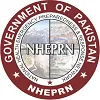The National Disaster Management Authority (NDMA) is Pakistan’s apex federal body responsible for overseeing, coordinating, and implementing disaster management activities nationwide. It was established on 17 August 2007 through the National Disaster Management Ordinance 2006, and later formalized under the NDMA Act 2010. NDMA operates under the administrative control of the Prime Minister’s Office and serves as the executive arm of the National Disaster Management Commission (NDMC), chaired by the Prime Minister.
Formation Context:
NDMA was created in response to Pakistan’s urgent need for a centralized disaster management system after catastrophic events like the 2005 earthquake and recurring floods. It was envisioned as a dedicated institution to enhance disaster risk management, response coordination, and resilience building nationwide.
Primary Roles and Responsibilities:
Key Functions:
At the provincial and regional levels, the Provincial Disaster Management Authorities (PDMAs) and Gilgit-Baltistan Disaster Management Authority (GBDMA) work under NDMA’s framework to implement disaster policies, manage local emergencies, and build disaster resilience:
Authority | Full Name | Coverage |
Provincial Disaster Management Authority Punjab |
Province of Punjab | |
Provincial Disaster Management Authority Sindh |
Province of Sindh | |
Provincial Disaster Management Authority KP |
Province of Khyber Pakhtunkhwa | |
Provincial Disaster Management Authority Balochistan |
Province of Balochistan | |
Gilgit-Baltistan Disaster Management Authority |
Gilgit-Baltistan region | |
State Disaster Management Authority Azad Jammu & Kashmir (AJK) |
Azad Jammu and Kashmir |
Authority | Full Name | Coverage |
Provincial Disaster Management Authority Punjab | Province of Punjab | |
Provincial Disaster Management Authority Sindh | Province of Sindh | |
Provincial Disaster Management Authority KP | Province of Khyber Pakhtunkhwa | |
Provincial Disaster Management Authority Balochistan | Province of Balochistan | |
Gilgit-Baltistan Disaster Management Authority | Gilgit-Baltistan region | |
State Disaster Management Authority Azad Jammu & Kashmir (AJK) | Azad Jammu and Kashmir |
Roles of PDMAs and GBDMA:
Relationship with NDMA:
A District Disaster Management Authority (DDMA) is a provincial government entity at the district level responsible for disaster management activities. It acts as a focal point for all disaster-related activities within the district, coordinating efforts and implementing measures to prevent, mitigate, prepare for, and respond to disasters.

The National Health Emergency Preparedness and Response Network (NHEPRN) is a federal program focused on health-sector emergency planning and response. It was established around 2010 by Pakistan’s Ministry of Health, in collaboration with the World Health Organization (WHO), to strengthen the country’s capacity to handle health crises during disasters disasterlaw.ifrc.org. Following the devolution of the health ministry in 2011, NHEPRN was placed under the Cabinet Division for coordination with the National Disaster Management Authority. NHEPRN serves as the national focal point for managing public health emergencies – ranging from disease outbreaks to mass casualty incidents – ensuring a prompt and organized health response across provinces.
Official Website: N/A (operates under the Ministry of National Health Services/Cabinet Division)
Rescue 1122 is a dedicated emergency response service in Pakistan that provides ambulance, rescue, and fire services across much of the country en.wikipedia.org. It began as a pilot project in Lahore in 2004 and was institutionalized by the Punjab Emergency Service Act of 2006, which established the service in Punjab province en.wikipedia.org. Over time, the Rescue 1122 model has been adopted in other provinces (Khyber Pakhtunkhwa in 2012, Sindh in 2023, etc.), making 1122 the nationwide emergency helpline for rapid response in crises. The service operates a modern fleet of ambulances and fire/rescue vehicles with trained personnel, achieving an average response time of around 7 minutes in urban areas en.wikipedia.org.
The Pakistan Red Crescent Society (PRCS) is a humanitarian organization dedicated to emergency relief and welfare services, functioning as the national Red Cross/Red Crescent society of Pakistan. It was founded on 20 December 1947 by an order of Muhammad Ali Jinnah (Pakistan’s founder) as the Pakistan Red Cross, succeeding the British Indian Red Cross Society in the newly independent state en.wikipedia.org. In 1974, it was renamed the Red Crescent to align with other Muslim-majority countries’ Red Crescent societies en.wikipedia.org. PRCS is legally recognized as a voluntary relief organization auxiliary to the government, tasked with alleviating human suffering and improving the lives of the vulnerable in accordance with the principles of the International Red Cross and Red Crescent Movement en.wikipedia.org. Its national headquarters is in Islamabad, with branches in every province and district of Pakistan en.wikipedia.org.